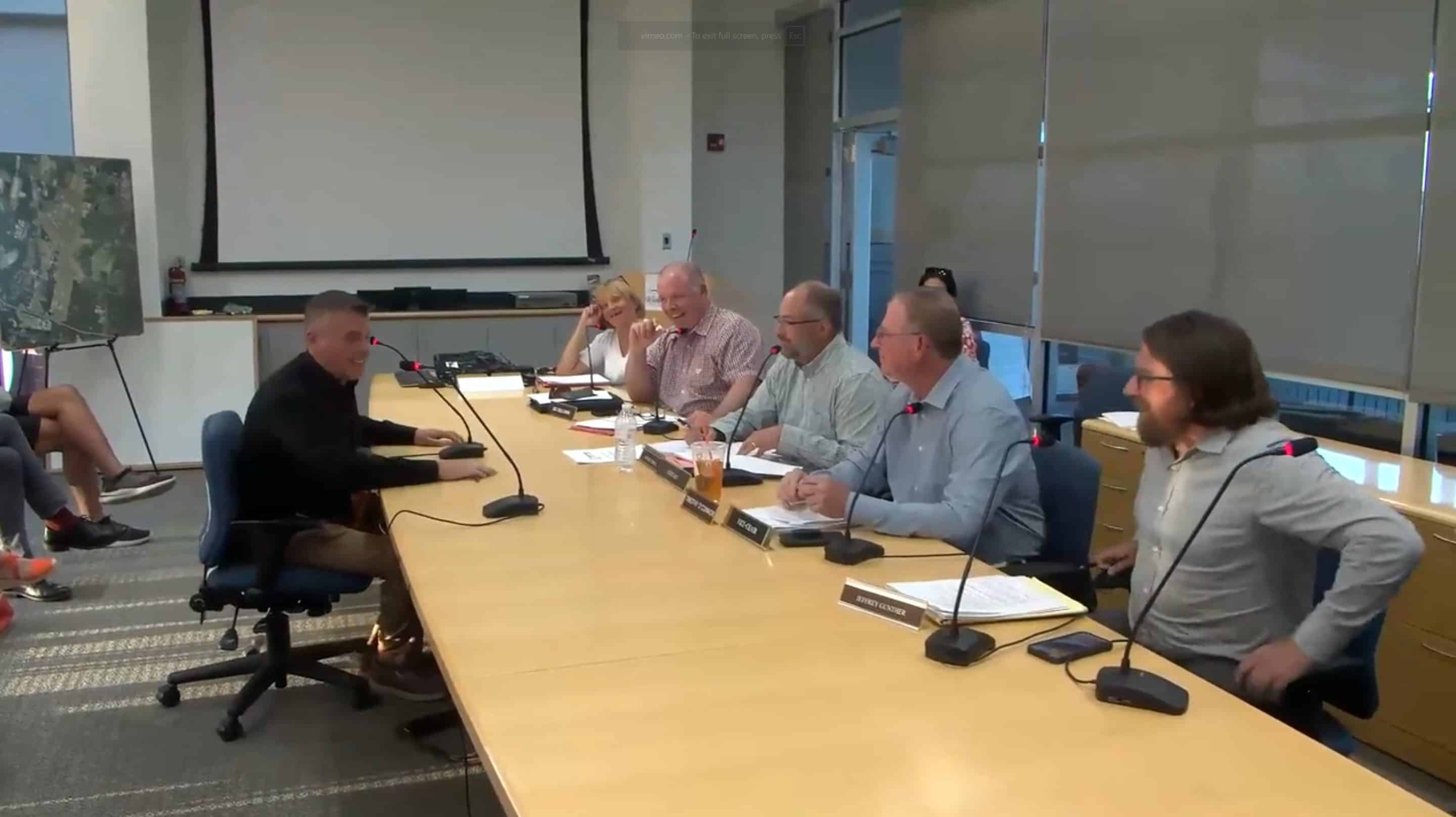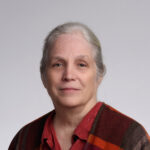Westfield Public Schools Superintendent Stefan Czaporowski meets with the School Committee on Aug. 25.
Photo credit: Westfield Community TV
WESTFIELD — At the Aug. 25 School Committee meeting, in the Westfield Barnes Airport Conference Room, Superintendent Stefan Czaporowski presented his goals for the 2025-26 school year that began Aug. 28 for grades 1-12 and on Sept. 3 for preschool and kindergarten.
Czaporowski laid out four main goals for the coming year; a comprehensive evaluation of the effectiveness of special education and English learner practices in the district; establishing monthly team meetings with administrators to review student data; implementing artificial intelligence tools and practices in 25% of math and English language arts classrooms districtwide, and to reduce chronic absenteeism by 1.3% districtwide, and by 3.5% for special education and English learner students.
Starting with goal one, Czaporowski said it’s a good time to evaluate special education and English learner practices with Gregory Rosenthal on board as the new administrator of special services and student support services, who was present at the meeting, and is a way to hone in on achievement and attendance gaps.
Rosenthal said they are looking at the continuum of services and practices throughout the district, and a 20% achievement gap in sub-groups. “We’ve got to get in the nitty gritty of it. We’re not too far at all from the state average.There’s a discrepancy across the state between the subgroups. We’re looking at co-teaching practices and inclusion practices, and how do we create a robust instructional practice toward reducing that gap.”
Bo Sullivan asked if the district will be looking at the services offered outside of school in addition to inside the classroom.
Rosenthal said the district wants to increase its relationship with community providers, which he called robust. “It’s a pretty good group. We control 6.5 hours a day — how do we make the most of it.” He said the district will be looking at the whole child approach, to control what they can control, bringing in providers from the outside.
Sullivan asked how bad the budget is going to be towards this goal. “Let’s be honest, this is the biggest unfunded mandate we’ve got,” he said.
Czaporowski said the state is supposedly going to fund the circuit breaker for special education at 75%, up from 44% last year, which they haven’t done before. “I don’t anticipate our costs going up,” he said, adding that now that the English learners are in their home elementary schools, the district will also be looking at that subgroup. He said money for circuit breaker doesn’t come in until the following year.
Rosenthal said they want to talk to students first to get their perspective, and to parents. He said he has already established the dates for the Special Education Parent Advisory Council meetings this year. He also plans to host a coffee shop community piece.
He said on Aug. 25 he took a phone call from a parent, who said they were moving into town and heard Westfield has great programming. “From what I see so far, we have great programs here. I’m very excited, there’s a lot of opportunity here. How do we create a sustainable product?”
Czaporowski said goal number two is to implement monthly structured grade level team and content meetings with administrators to review student performance data, and address student deficiencies. He said they haven’t been able to implement the meetings in the past on the elementary level due to budget constraints, although they have on the middle school level.
“We started over the summer to look at all the data in front of us. Having it every month keeps it in the forefront. The goal is to improve overall student achievement. We need to get teachers on the same page,” Czaporowski said.
Jeffrey Gunther asked how the district would measure the increased use of data at the meetings. He said when the MCAS results come in, they will identify where the district needs to go.
In terms of outcomes, Czaporowski said they will become more defined in a later goal. “We didn’t put a percentage on this — we’re looking at getting the practice down before we promise improvements. The first year will be the implementation year, getting people in the habit of talking about data,” he said. “There is camaraderie that already exists. This is going to enhance it and be very helpful.”
Czaporowski called goal three, to implement AI tools and practices in at 25% of math and ELA classrooms districtwide to enhance personalized learning, streamline administrative tasks, and improve student outcomes, a “large and lofty goal. We’re already behind. The legislature is focused on cellphones and no one’s talking about AI at all.”
Czaporowski said he was on a webinar with superintendents talking about how they use AI. He said one superintendent who has 25,000 students receives 100-150 emails a day, and uses Gemini and Google to summarize emails and put important dates in the calendar.
“Our kids are already using it. We have a lot to go … This is going to be fun and exciting. I would like somebody from the School Committee that wants to dive into this with us to be on our team,” Czaporowski said. He said the district wants to launch some classroom projects that focus on math and ELA. “We need to provide AI resources for teachers. I think this can help students personalize their own learning and make teacher’s tasks easier in the classroom. The opportunities are endless. It’s fascinating — the effect on education I don’t think has been looked at — we have to do this.”
“I agree, this is certainly relevant. My first thought when I read this goal, are we trying to figure out how to integrate AI into the learning process, or coming up with rules and guidelines. To your point, the kids are using this, that’s a foregone conclusion,” said Michael Tirrell.
“I do think before diving into this we have to have some guidelines, so we’re not running like the wild, wild west. At the same time, why have the guidelines if we’re not going to use it. I’m excited we’re doing it; I think it’s got a lot of potential. Some of our staff are using it — we need to get on board,” he said.
“We do have to bring in the tech center as well. Right now students don’t have Gemini and Google, but we do,” Czaporowski said.
“I see connections here across multiple subcommittees, not only policy, but curriculum and instruction. It is both policy and what we intend to do with it. My other observation is that this is a very lofty goal for 2026,” said Gunther.
“This is really a multi-year goal. It can streamline tasks, and make you more productive with your time. I did pick ELA … one of the first things you always hear about is plagiarism. A lot of districts are behind, and the templates I got are from California and not here,” Czaporowski said.
“I’m glad we’re doing it — it’s a good goal,” said Hillman.
The fourth goal is to reduce chronic absenteeism by 1.3% for all students, 3.5% for special education and ELL. “That might be a bit lofty for the last two. There is clearly a parallel between academic achievement and attendance,” Czaporowski said. “It’s important to get these kids to school.”
He said the goal was kicked off at the district’s summer retreat. He said they will be doing attendance recognition programs, keep the attendance task force, and revise interventions. “When we do better with attendance, it will automatically affect achievements.”
Chris Rogers said overall, last year, the district was roughly at 93% attendance for daily rate. “We would love to be at 95%. We’ve made some nice gains since COVID, but we’re still not back to pre-pandemic levels,” Rogers said.
Czaporowski said the district wants to include English learners and special education students. He said there are no excused absences, as the Department of Elementary and Secondary Education doesn’t count chronic illnesses. “The state told us to stay home for 10 days for COVID, and it counts against us,” he said, adding that part of marketing this goal will be to reach out to parents. He also said rewards for attendance will be different for elementary and high school students and for parents, too.
“The one thing that can throw you off is a bad flu season, or COVID, or a stomach bug. We really don’t want people coming to school if that’s happening,” Czaporowski said.
“In general, in reading through the goals. We’ve talked a lot in the past having lofty goals, realistic goals with measurability written into them,” said Tirrell. “These four goals as best as they possibly could address a snapshot of where we stand as a district and the things we need to work on.”
“I want to thank our team, we did spend the summer working on them. It is a team goal, and it’s important we’re all working on the same thing,” Czaporowski said.


